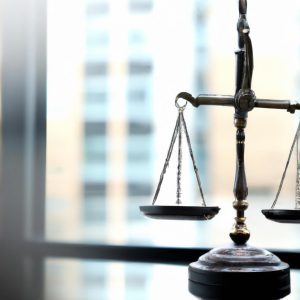In the realm of intellectual property, the name Walt Disney undoubtedly holds immense weight. Known for creating iconic characters and stories that have captured the hearts of audiences worldwide, the Disney brand is synonymous with magic and imagination. However, as with any beloved figure, controversies and legal battles can arise. One such dispute that has garnered attention is the “Walt Disney Brain Frozen” case. In this article, we will delve into the intricacies of this intriguing legal matter, examining the claims and defenses put forth in the ongoing debate surrounding the alleged preservation of Walt Disney’s brain. Despite the fantastical nature of the allegations, our team at Morgan Legal Group is well-equipped to navigate the complexities of this case and shed light on the truth behind the ”Walt Disney Brain Frozen” controversy.
<img class=”kimage_class” src=”https://estatelawnewyork.com/wp-content/uploads/2024/09/KhojAyvQ-253D.jpg” alt=”Understanding the Legal Implications of Walt Disney’s “Brain Frozen””>
Understanding the Legal Implications of Walt Disney’s “Brain Frozen”
When it comes to the legal implications of Walt Disney’s “Brain Frozen,” there are several key factors to consider. Firstly, it is crucial to understand the concept of intellectual property rights and how they apply to this unique situation. Disney, as the creator of the iconic character Frozen, holds exclusive rights to the character and any related content.
Additionally, issues of copyright infringement may arise if any unauthorized use of Disney’s intellectual property occurs. It is essential for individuals and businesses to seek legal counsel to ensure they are not in violation of any copyright laws. Furthermore, potential contractual disputes could arise if parties attempt to profit from the “Brain Frozen” concept without the proper authorization from Disney. It is imperative to navigate these legal waters carefully to avoid any potential legal repercussions.

Examining the Science Behind Cryonics and Its Relation to Estate Planning
Cryonics is the practice of preserving a deceased person’s body in extremely cold temperatures with the hope of one day being able to revive them. While this concept may seem like something out of science fiction, the science behind cryonics is rooted in the idea that by freezing the body, the cells are preserved, potentially allowing for future revival and medical treatment.
- Cryonics involves lowering the body’s temperature to -196 degrees Celsius.
- The process typically begins within minutes of legal death.
- Advocates of cryonics believe that advancements in medical technology may one day allow for the revival of cryogenically frozen individuals.
When it comes to estate planning, cryonics presents unique challenges. It is essential for individuals considering cryonics to include specific provisions in their estate plan to address the preservation and potential revival of their body. From designating a trustee to handle cryonics-related expenses to outlining instructions for medical care upon revival, careful consideration must be given to ensure that the individual’s wishes are carried out effectively.

Navigating the Ethical Considerations of Preserving One’s Brain for Future Revival
Preserving one’s brain for future revival is a controversial topic that raises several ethical considerations. When discussing the case of Walt Disney’s brain being preserved, it is important to consider the following ethical dilemmas:
- The moral implications of potentially bringing someone back to life after they have passed away
- The uncertainty surrounding the technology and scientific advancements needed for brain revival
- The financial cost and access issues related to brain preservation
Furthermore, legal questions arise regarding the rights and ownership of one’s preserved brain, as well as potential conflicts with existing estate planning documents. As experts in estate planning and probate law, we understand the complex legal and ethical issues surrounding brain preservation and revival, and we are here to help navigate these considerations.

Recommendations for Individuals Considering Cryopreservation in their Estate Plans
As individuals contemplate including cryopreservation in their estate plans, it is crucial to carefully consider various factors before making this decision. Some key recommendations for those considering cryopreservation in their estate plans include:
- Educate Yourself: Before making any decisions regarding cryopreservation, individuals should thoroughly educate themselves on the process, costs, and long-term implications.
- Consult with Professionals: It is highly recommended to seek advice from estate planning attorneys, financial advisors, and medical professionals before incorporating cryopreservation into your estate plan.
- Weigh the Costs and Benefits: Consider the financial implications of cryopreservation, including initial costs, ongoing maintenance fees, and potential returns on investment.
When incorporating cryopreservation into your estate plan, it is essential to address various legal and financial considerations. Individuals should carefully review their Wills and trusts to ensure that their wishes regarding cryopreservation are clearly outlined. Additionally, it is crucial to consult with experienced estate planning attorneys to ensure that all legal requirements are met and that your estate plan accurately reflects your intentions. By taking these steps, individuals can effectively incorporate cryopreservation into their estate plans while safeguarding their assets and ensuring their wishes are carried out according to their wishes.
| Benefits | Considerations |
|---|---|
| Preservation of genetic material | Long-term costs |
| Potential future medical advancements | Legal and ethical implications |
Q&A
Q: What is “Walt Disney Brain Frozen”?
A: “Walt Disney Brain Frozen” is a concept that refers to the phenomenon where people experience a mental block or inability to think creatively or come up with new ideas.
Q: Why is it called “Walt Disney Brain Frozen”?
A: The term is named after Walt Disney, the legendary animator and creator of Disney films and characters. Disney was known for his innovative and imaginative ideas, so experiencing a mental block like this is seen as the opposite of Disney’s creative genius.
Q: What are some common causes of “Walt Disney Brain Frozen”?
A: Common causes of “Walt Disney Brain Frozen” can include stress, burnout, lack of inspiration, and fear of failure. These factors can all contribute to mental blocks and difficulty in coming up with new ideas.
Q: How can one overcome “Walt Disney Brain Frozen”?
A: To overcome ”Walt Disney Brain Frozen”, it’s important to take breaks, engage in activities that inspire creativity, collaborate with others, and try new things. Relaxation techniques, such as meditation or going for a walk, can also help to clear the mind and spark new ideas.
Q: Is it common for people to experience “Walt Disney Brain Frozen”?
A: Yes, it is common for people in creative fields to experience periods of mental block or lack of inspiration. However, with the right strategies and techniques, it is possible to overcome “Walt Disney Brain Frozen” and tap into one’s creativity once again.
In Conclusion
In conclusion, the fascinating phenomenon of Walt Disney’s brain alleged to be frozen may forever remain a mystery. Although there is no concrete evidence to support this theory, it continues to spark curiosity and speculation among fans and theorists alike. Whether truth or urban legend, the legend of Walt Disney’s frozen brain will surely continue to captivate imaginations for years to come. Thank you for delving into this peculiar tale with us. Until next time, keep your mind open to the endless possibilities that the world of imagination has to offer.
 Walt Disney is a name that needs no introduction. From beloved characters and enchanting theme parks to award-winning movies and memorable songs, Disney has captured the hearts of people all around the world for decades. The company is known for its creativity, innovation, and exceptional storytelling. However, even the greatest of creative minds can sometimes face challenges. One such challenge that Disney had to overcome was the infamous “Disney Brain Freeze.” In this article, we will dive deeper into this phenomenon, explore its impact, and understand how Disney found a solution to this problem.
Walt Disney is a name that needs no introduction. From beloved characters and enchanting theme parks to award-winning movies and memorable songs, Disney has captured the hearts of people all around the world for decades. The company is known for its creativity, innovation, and exceptional storytelling. However, even the greatest of creative minds can sometimes face challenges. One such challenge that Disney had to overcome was the infamous “Disney Brain Freeze.” In this article, we will dive deeper into this phenomenon, explore its impact, and understand how Disney found a solution to this problem.
What is Disney Brain Freeze?
Disney Brain Freeze, also known as the “Walt Disney Brain Mistake,” is a term used to describe the period between 1979 and 1984 when Disney, the king of animated films, faced a decline in box office success. This period was marked by the release of several unsuccessful films, such as “The Black Cauldron” and “The Great Mouse Detective.” These films not only received poor critical reception but also failed to generate significant revenue for the company.
What Caused Disney Brain Freeze?
There are several factors that contributed to Disney Brain Freeze, but the main reason was the lack of internal creative direction and competition from other animation studios. During this period, Disney was going through a major transition as Disney’s Nine Old Men, the veteran animators responsible for the company’s iconic films, were retiring. This left a significant void in the company’s creative team, resulting in a lack of cohesive and visionary leadership.
Additionally, Disney faced stiff competition from other animation studios, such as Don Bluth Productions, who were gaining popularity and success in the industry. These studios were pushing the boundaries of animation and creating unique and engaging characters, which caught the attention of the audience. This put pressure on Disney to step up its game and create equally compelling content.
Impact of Disney Brain Freeze
The Disney Brain Freeze period was a significant blow to the company’s reputation and financial stability. The string of unsuccessful films not only affected the box office but also damaged the brand’s image. Disney, once known for its innovative and imaginative storytelling, was now seen as unoriginal and struggling to keep up with the changing times.
The impact of Disney Brain Freeze was also felt within the company, with employee morale at an all-time low. The lack of success not only affected the creative team but also the business side of the company. The financial pressure to deliver successful films also led to internal conflicts and management changes.
Finding a Solution
Being the master of storytelling, Disney knew that they needed to find a way to overcome this crisis and regain their position as the leader in animation. The solution came in the form of a small team of young and ambitious animators, led by the talented John Lasseter. They understood that for Disney to thrive again, they needed to return to the company’s core values of innovation and creativity.
With Lasseter at the helm, Disney released “The Little Mermaid” in 1989, which marked the end of the Disney Brain Freeze period. The film’s success not only brought back the faith of the audience but also won critical acclaim, earning Disney its first Best Original Song and Best Original Score Oscars in over two decades.
Since then, Disney has released numerous hit films and has reclaimed its spot as the leader in animation. The company also expanded into the theme parks, consumer products, and television industries, cementing its position as a global entertainment powerhouse.
Lessons Learned
The Disney Brain Freeze period taught the company and the industry valuable lessons. It showed that even the most successful and established companies can face challenges and need to adapt to changing times and competition. It also highlighted the importance of having a strong and cohesive creative team, as well as the significance of staying true to the company’s core values.
Furthermore, Disney learned the importance of not being afraid to take risks and innovate. This has been evident in the company’s recent success with films such as “Frozen” and “Moana,” which have pushed the boundaries of animation and storytelling.
Conclusion
The Disney Brain Freeze may have been a dark period for the company, but it ultimately made Disney stronger and more resilient. It showed that overcoming challenges and regaining success is possible with determination, creativity, and a willingness to adapt. This has been Disney’s mantra since its founding and remains the driving force behind the company’s success today.
In conclusion, the Disney Brain Freeze is a testament to the company’s legacy and its ability to bounce back from any setback. It is a reminder to always stay true to your core values, never give up, and keep dreaming big. After all, as Walt Disney himself famously said, “If you can dream it, you can do it.”





